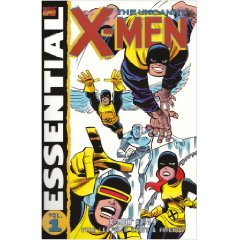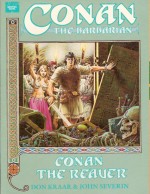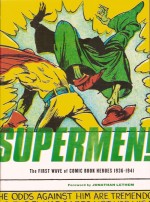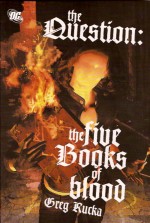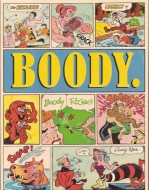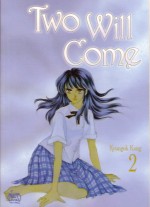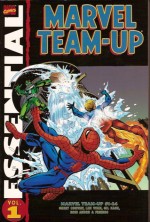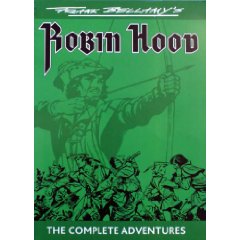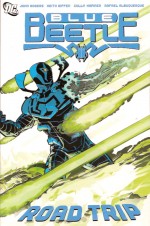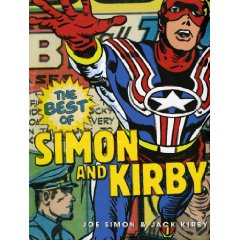
By Joe Simon, Jack Kirby and various (Titan Books)
ISBN13: 978-1-84576-931-4
There’s a glorious wealth of Jack Kirby material around at the moment and this astounding collection of his collaborations with fellow industry pioneer Joe Simon is a gigantic box of delights that perfectly illustrates the depth and scope of their influence and innovation by reprinting the merest fraction of their output over nearly two decades.
Divided into key genres, supplemented by informative features from that ever-engaging writer and comics historian Mark Evanier, this striking compendium leads with The Heroes. reprinting in eye-popping colour ‘Captain America and the Riddle of the Red Skull’ from the landmark first issue (March 1941), and an untitled adventure of the Golden Age Vision from Marvel Mystery Comics #14 (December 1940).
From S&K’s incredible war-time tenure at National/DC comes ‘The Villain From Valhalla!’, a Sandman yarn first seen in Adventure Comics #75 (June 1942), followed by the origin of the incredible Stuntman in ‘Killer in the Big Top’ (Stuntman Comics #1, April 1946). ‘Assignment: Find the King of the Crime Syndicate’ is a raucous romp from their spoof patriotic hero Fighting American (#2, June 1954) and this section ends with a tale from Adventures of the Fly #1(August, 1959) entitled ‘Come into My Parlor’. Each text section is copiously illustrated and classic covers for each genre further sweeten the pot…
Way out Science Fiction follows, represented here by Solar Patrol in ‘The Tree Men of Uranus’: a Joe Simon solo production from Silver Streak Comics #2 (January, 1940), the eponymous hero from Blue Bolt Comics #4 (September, 1940) and the magnificently spooky short ‘The Thing on Sputnik 4’ (Race for the Moon #2, September 1958).
War and Adventure highlights some of their most passionate yet largely unappreciated material. Boy Commandos often outsold Superman and Batman during World War II, and the moody ‘Satan Wears a Swastika’ from the first issue of their own title (Winter, 1942) clearly shows why, whilst the nuclear armageddon depicted in ‘The Duke of Broadway: My City is No More’ (Black Cat Comics #5, April 1947) set the bar for all others creators.
Simon and Kirby famously invented the romance comic genre and in The Birth of Romance we can see why the things took off so explosively, if not why all their imitators so timidly bowdlerized their own efforts. ‘Weddin’ at Red Rock’ from Western Love # 1, July 1949, is a raw, wild tale of obsessive passion, whilst ‘The Savage in Me’ (Young Romance Comics #22, June 1950) easily stands up against the best melodramas Hollywood was then producing.
Crime Drama uses three tales from 1947 (at the birth of the trend that led, with horror stories, to the instigation of the Comics Code Authority) to show how the dynamic visual flair of the ex-ghetto kids raised work like ‘Trapping New England’s Chain Murderer!’ (Headline Comics #24, May), the infamous Ma Barker story ‘Mother of Crime’ (Real Clue Crime Comics Vol. 2 #4, June) and ‘The Case Against Scarface’ (Justice Traps the Guilty #1, October) far above most of the avalanche of material all those decent folk and politicians railed against.
The Great Western features some of S&K’s most revered characters with ‘Apache Justice!’ from The Kid Cowboys of Boy’s Ranch #2 (December 1950), a spectacular spread ‘Remember the Alamo!’ from issue #5 and a captivating tale ‘Doom Town!’ starring the masked hero Bulls Eye from the fourth issue of his own short-lived title (February 1955).
Oh! The Horror! holds some especially impressive work, including ‘The Scorn of the Faceless People’ (Black Magic Vol. 1 #2, December 1950), the haunting ‘Up There!’ from #13 (confusingly also numbered as Vol. 2 #7, June 1952) and the remarkable ‘The Woman in the Tower!’ from The Strange World of Your Dreams #3 (November 1952).
Less well known are the forays into Sick Humor as seen here with ‘A Rainy Day with House-Date Harry’ (My Date #4, January 1948), the utterly wonderful parody strip ‘20,000 Lugs under the Sea’ originally seen in From Here to Insanity #11 (August 1955) and a couple of solo pieces from Simon. ‘Lenny Bruce’ and the editorial page are both from satire magazine Sick (Vol. 1 #2, 1960) and readily display the design and literary panache as well as artistic virtuosity he brought to the partnership.
With an extensive but far from complete checklist (talk about impossible tasks!) this tremendous hardcover is a worthy, welcome start towards acknowledging the debt our art-form owes these two unique creators. Now let’s have some more please…
© 2009 Joseph H. Simon and the Estate of Jack Kirby. All other material is © and TM the respective owner and holders and used with permission. All Rights Reserved.

